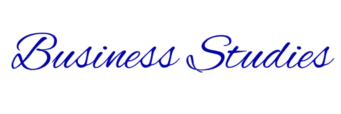1. Interview Etiquette: The Full Notes
Interview etiquette covers the rules of professional behavior before, during, and after an interview. It’s about showing respect, preparation, and confidence.
A. Pre-Interview Etiquette (Preparation is Key 🔑)
This phase determines your readiness and professionalism before you even speak to the interviewer.
| Aspect | Do’s ✅ | Don’ts ❌ |
| Research | Do deeply research the company/school, the role/program, and even the interviewer (via LinkedIn, etc.). | Don’t ask basic questions that can be answered easily from the website (shows lack of effort). |
| Punctuality | Do arrive 10-15 minutes early (for in-person) or log in early (for virtual). This buffer manages unexpected delays. | Don’t be late—it signals poor time management, a critical skill in business. |
| Attire | Do dress in conservative, formal business attire (suit, tie, tailored professional wear). Clothes should be clean, ironed, and well-fitting. | Don’t wear strong perfumes/colognes, distracting jewelry, or overly casual clothes. Rule of thumb: Better to be slightly too formal than too casual. |
| Materials | Do bring a professional portfolio/folder containing extra copies of your resume, a notepad, and a pen. | Don’t bring a messy bag or an open notebook. Don’t fumble for documents. |
| Logistics | Do silence your phone completely (or turn it off). For virtual interviews, test your camera, microphone, and internet connection beforehand, and use a neat, neutral background. |
B. During-Interview Etiquette (First Impressions Matter Most)
This phase is about communication—what you say and, just as importantly, how you convey it through your body language.
| Aspect | Verbal Communication | Non-Verbal Communication |
| Greeting | Use a respectful address (Mr./Ms./Dr. [Last Name]) unless invited to use a first name. | Offer a firm, brief handshake (if in-person and appropriate). Smile genuinely. |
| Answering | Do listen to the full question, pause for 1-2 seconds to collect your thoughts, and then answer clearly and concisely. | Do maintain eye contact (with all panel members, shifting focus naturally). Sit up straight with a good posture. |
| Structure | Use frameworks like STAR (Situation, Task, Action, Result) for behavioral questions (e.g., “Tell me about a time you showed leadership”). | Don’t fidget, slouch, tap your pen/feet, or chew gum. Avoid crossing your arms, as it can appear defensive. |
| Tone | Speak with a confident, moderate, and clear voice. Use positive language and show enthusiasm. | Use natural hand gestures to emphasize points, but don’t overuse them. |
| Handling Difficulties | If you need clarification, politely say, “That’s a great question; could you please rephrase what you mean by X?” | Remain composed and professional, even when faced with challenging questions or criticism. |
| Questions to Ask | Do ask 2-3 thoughtful, high-level questions about the program’s direction, culture, or the interviewer’s experience. Never say you have no questions. |
C. Post-Interview Etiquette (The Follow-Up)
The follow-up solidifies your professionalism and continued interest.
| Aspect | Do’s ✅ | Don’ts ❌ |
| Thank You Note | Do send a personalized thank-you email to each interviewer within 24 hours. Mention a specific point you discussed to show you were listening. | Don’t send a generic, one-size-fits-all email. Don’t wait longer than a day. |
| Self-Reflection | Do take notes on what questions you struggled with, what you learned, and how you can improve for the next interview. | Don’t become complacent or forget the details of the discussion. |
| Professionalism | Do follow up politely if the promised timeline for a decision passes (wait 1-2 days after the deadline). | Don’t become a nuisance by sending multiple emails or calls asking about the decision timeline. |
2. Why Etiquette Helps MBA Students
Interview etiquette is not just about manners; it’s a demonstration of the professional skills that business schools and employers expect from future leaders.
🌟 1. Builds Your Personal Brand (First Impression)
- For MBA Admissions: Your polished appearance and polite demeanor signal that you take the opportunity seriously and already possess the executive presence of a future business leader.
- For Job Interviews: A strong first impression through etiquette makes the interviewer subconsciously more receptive to your professional experience and skills.
🗣️ 2. Demonstrates Communication and Poise
- Clarity and Structure: Using an etiquette-focused approach (e.g., pausing, using the STAR method, and being concise) showcases your ability to communicate complex ideas under pressure—a core management skill.
- Emotional Intelligence (EQ): Maintaining composure, making eye contact, and actively listening are signs of high EQ. B-schools and top employers look for this ability to navigate professional social dynamics.
📈 3. Signals Respect and Fit
- Respect for Time: Being punctual and having well-structured answers shows you respect the interviewer’s time, which is paramount in the business world.
- Cultural Fit: By demonstrating politeness and asking insightful questions, you convey that you understand the professional culture of the organization or school, suggesting you’d be a positive and valuable member of their community.
In short, for an MBA student, good etiquette proves you’re not just academically smart, but also professionally ready and socially competent.
